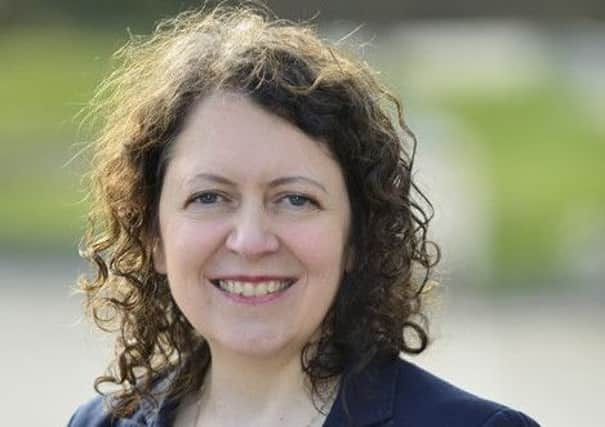Sheila Duffy: School the place to learn lessons on tobacco-free policies and practical solutions


While significant progress has been made, much remains to be done if all of Scotland’s next generation is to grow up making healthy and informed choices on smoking.
Understandably, the many tobacco policies that support the translation and implementation of smoke-free legislation on a day-to-day basis have tended to focus on compliance and enforcement. These policies essentially highlight and clarify what people can and cannot do, where the policy applies, and the consequences of breaching it.
Advertisement
Hide AdAdvertisement
Hide AdWhile a strong focus on compliance and enforcement has clearly had a major impact on attitudes and approaches to tobacco, Curriculum for Excellence and Getting it Right for Every Child make it clear that schools, and school staff, have a vital role to play in nurturing and supporting young people as they make the transition into adulthood. Young people are also keen to support others.


A subtle shift in school-based tobacco policies to support both policy compliance and a greater focus on health promotion would help schools and staff to own their position as positive role models, minimise the mimicking of smoking behaviour, and help create an ethos that encourages young people to make healthy behaviour choices.
ASH Scotland and NHS Lothian have recently supported a dozen secondary schools to develop and introduce tobacco-free policies that go beyond simply stating where people can and cannot smoke. Instead they support teachers, staff and pupils to make healthy and positive lifestyle and behaviour choices on smoking and tobacco.
These schools from across the Lothians have developed and implemented tobacco-free policies that go further. They formally support health promotion, health protection, healthy role modelling behaviour, and encourage healthy behaviour choices. So what have these schools done in practice to deliver subtle, yet meaningful, changes to the way in which they look at tobacco issues on a day-to-day basis?
Schools have achieved consistent buy-in from pupils, teachers, parents and local communities by consulting effectively with them. By asking people for their views and reflecting that input in tobacco-free policies, they have boosted the profile of the health-promoting rationale behind the new policies.


Active consultation has also encouraged people to feel that they have a stake in an approach that will shape the choices and decisions that people make about their own health, and the health of those around them.
Schools have also recognised that in order to use their new tobacco-free policy to stimulate healthy behaviour choices, they need to make sure that people know about both the policy and the motivation behind it.
We’ve seen posters and banners designed by pupils, year group assembly sessions developed and delivered by pupils. Pupils have put their posters and banners up in their local community, and schools have worked with community partners to raise the profile of their new tobacco-free policy even further.
Advertisement
Hide AdAdvertisement
Hide AdIn short, we’ve seen teachers and pupils working together to shape the policy and to let people know what it is and aims to achieve.
Beyond consultation and awareness-raising, schools have looked to provide practical and appropriate stop-smoking support for smokers, be they pupils or members of staff. We’ve also seen schools reviewing and updating the way they address tobacco education within the traditional arena of Personal and Social Education (PSE), and starting to introduce tobacco prevention messages more broadly across the curriculum through modern languages, science subjects, PE, maths and social sciences.
Perhaps most encouraging of all, we’ve seen schools, pupils and teachers find their own practical solutions to time and resource pressures and deliver achievable, realistic and meaningful contributions that will shape, inform and help guide the choices that young people make on smoking and tobacco .
Scotland has a target to be tobacco-free by 2034. Ensuring that young people in Scotland are consistently supported to make informed and balanced choices about their health, and the health of their friends and peers, will help to achieve this.
For more information and ideas about how ASH Scotland can support the development and implementation of health-promoting tobacco-free school policies, contact us on 0131 225 4725 or [email protected] Sheila Duffy, chief executive, ASH Scotland